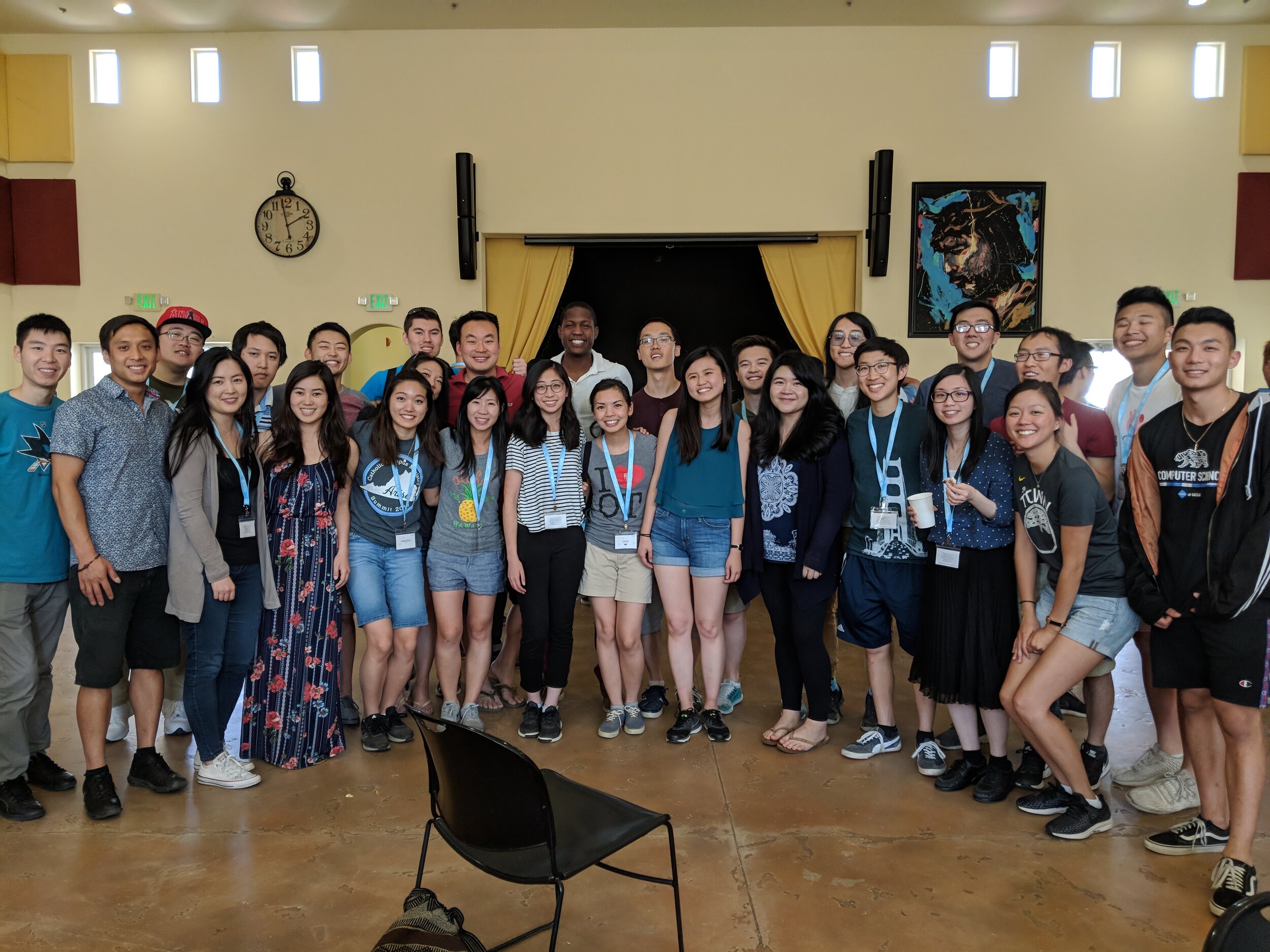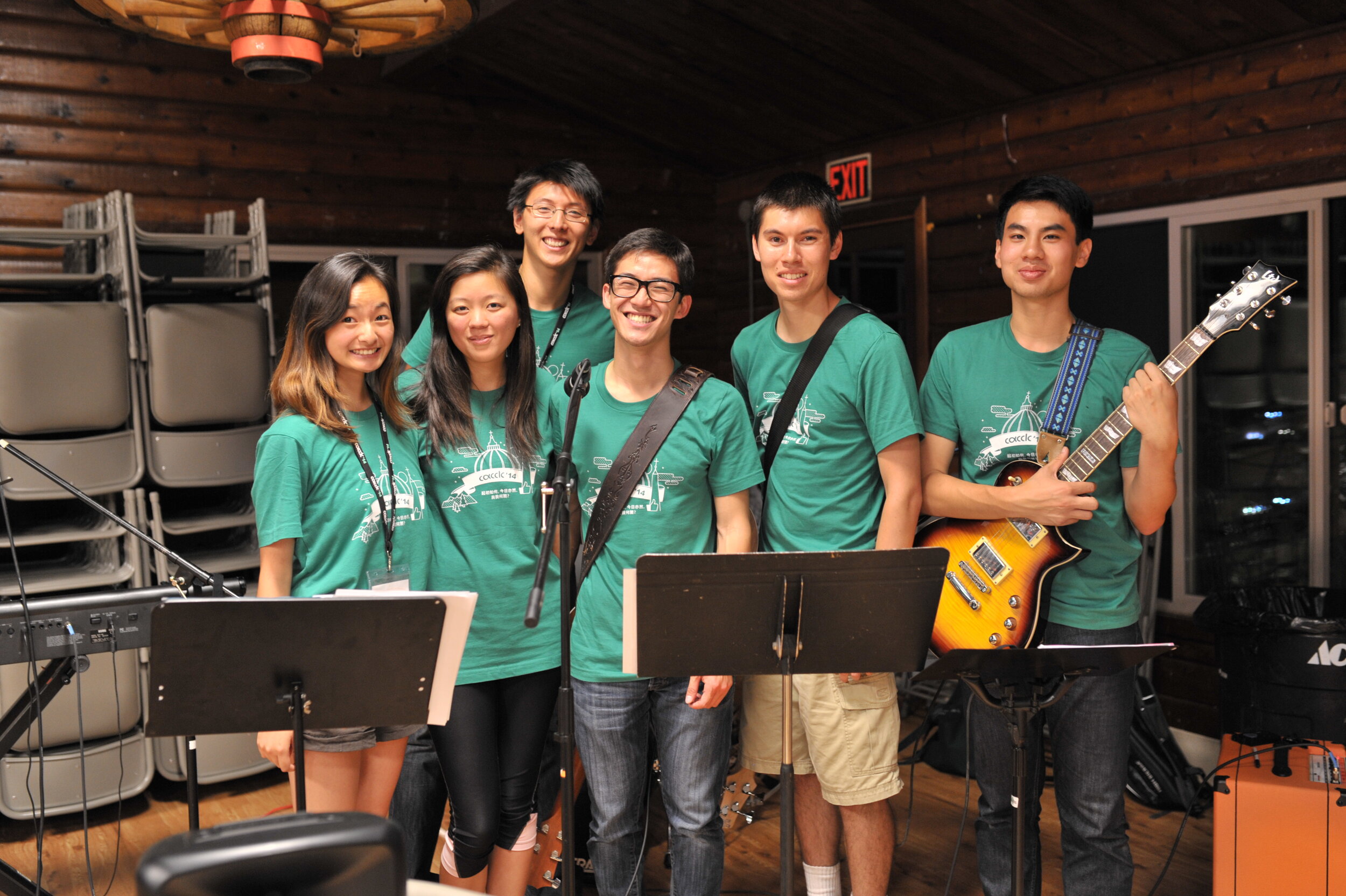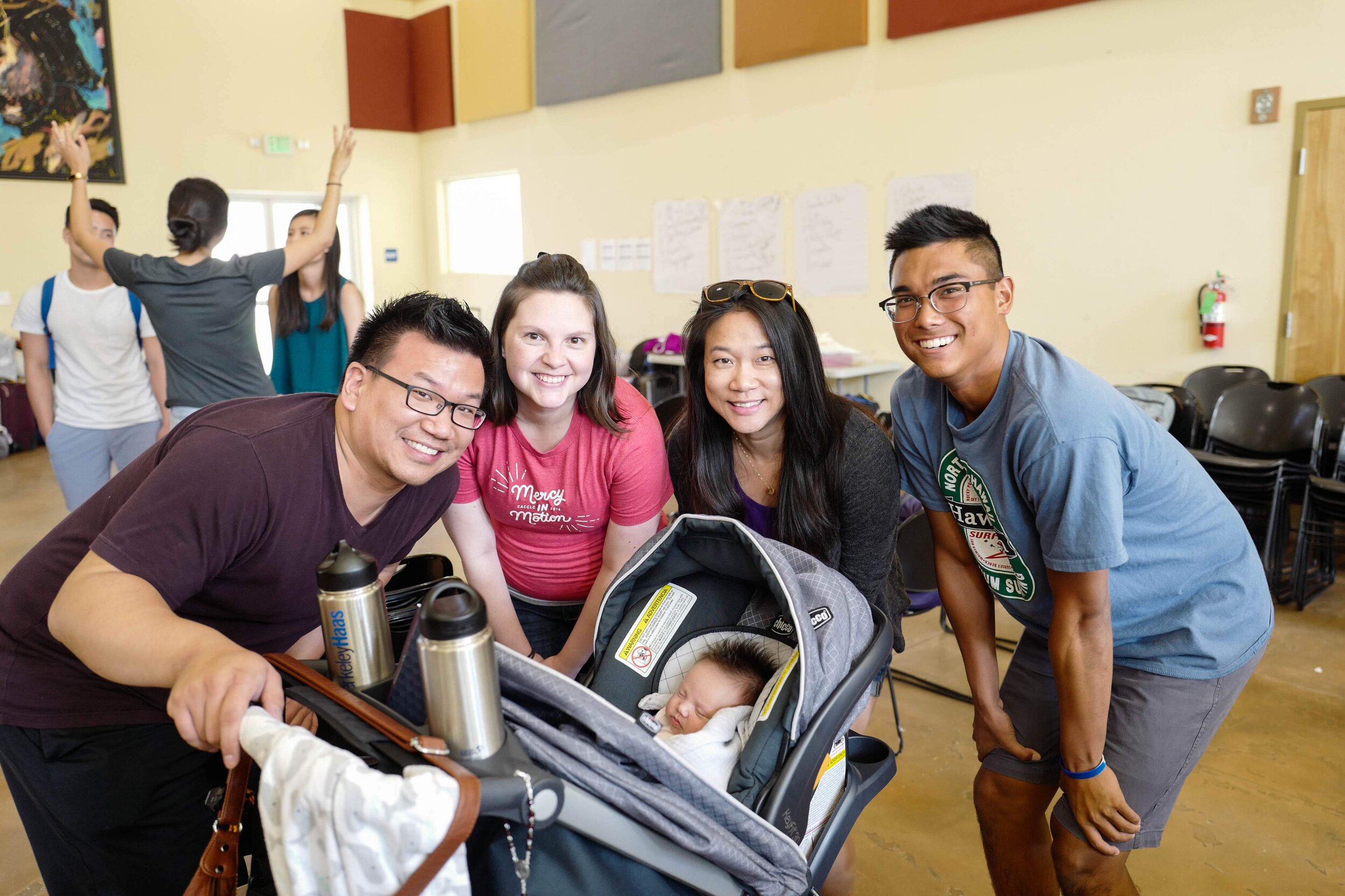CACCLC has its roots in Canada. In 1977, a group of young Chinese Catholics, particularly Cantonese students in Eastern Canada, held the Eastern Canada Chinese Catholic Community Conference in Ontario. Their goal was to give young Chinese Catholics an opportunity to gather for fellowship and spiritual growth. From then on, this became an annual event, although it changed its name to Eastern Canada Chinese Catholic Living Camp (ECCCLC) in 1983.
Western Canada followed suit with its own version, Western Canada Chinese Catholic Living Camp. In 1997, the first WCCCLC was held in British Columbia. And the following year, it arrived in California thanks to Fr. Denis Kong.
At the time, the camp only took place in the Bay Area. Kong had witnessed the camps in Canada. And with a significant number of young Chinese Catholics living in the Bay Area, Kong believed they would benefit from a similar event. So, he started recruiting from major Chinese Catholic Communities in the Bay Area, including the Sts. Peter and Paul Church in San Francisco and St. Leo the Great Church in Oakland. In 1998, the first Bay Area Chinese Catholic Living Camp (BACCLC) was held in Oakland, where Fr. Kong served as the spiritual director.
BACCLC 1998
In 1999, all three camps joined forces to take place over Labor Day weekend, giving campers a sense of unity with other Chinese Catholic communities.
“It was great meeting new friends, meeting new people, being from a Chinese Catholic community. We’re sort of our own little island. It isn’t until we got to a camp like this that you think oh wow there’s other Chinese Catholic communities out there,” says Nicholas Lau, who has been going since 2003.
In 2007, the organizing committee made BACCLC into a statewide camp as they shaped the path of the living camp for the future. This allowed them to expand their community and bring on Chinese Catholic young adults from southern California. And that’s how today’s California Chinese Catholic Living Camp (CACCLC) began.
Nicholas helped lead the change from BACCLC to CACCLC. With a growing contingency of campers from SoCal, it made sense to include people from all over California. When he led the camp, he made more effort to target the SoCal Chinese Catholic community, since many of them were not aware of camp, or even other Chinese Catholic communities in the area.
“We knew how special the camp was. We saw the good that comes out of it. The lives that changed from it. We wanted to preserve it and make sure that’s available for the future,” Nicholas said.
CACCLC 2007
How has CACCLC changed over the years?
In 1998, camp looked very different than it does today. For one, the camp’s activities and talks were mostly conducted in Cantonese. That’s because in the 1990s, there was an influx of immigrants and international students from Hong Kong and Macau residing in the Bay Area. A camp that directly targeted their community and spoke to them in their own language provided these young adults a safe space to discuss and grow in their faith. This was especially important as many struggled to fit into American culture and local retreats in the U.S.
Soon, because of the rapidly changing demographics of the Bay Area, more Mandarin speaking and American born Chinese young adults joined BACCLC. In 2003, BACCLC was conducted in both English and Cantonese, and one year later, it was mainly in English. Today, most campers speak English as their native language and indicate if they would like to be part of a Cantonese or Mandarin-speaking small group.
That being said, campers can still use their native languages to share their faith. Still, no matter what their first language is, campers shared one faith and often shared similar cultural values. Chinese Americans saw camp as a community to practice their faith and a spiritual home.
“The year I went, I was actually in the Mandarin group,” said Teresa Lee, who has attended since 2005. “Since then, a lot of American born Chinese found out about it. Before it was all Chinese. Now there are also Vietnamese, Koreans, Hispanics, people from different ethnicities, non-Catholics as well. We have a lot of ESL students in recent years and that’s why the Chinese groups are back again.”





Since its beginnings, campers have been attending camp to grow in their faith and their friendships, as well as making plenty of lasting memories. Teresa says some of her favorite memories include making arts and crafts like a rosary and exploring a nearby cemetery in Santa Barbara.
And while things have changed over the years, Nicholas says the community stays strong.
“That’s one of the things I’ve loved about the camp,” Nicholas said. “You get to make lifelong friends. People who go from SoCal to NorCal or out of state, they have a community of friends who they can keep plugging in to so they keep coming to camp. Technology has changed and it’s great to see the newer leaders step up and bring that into the equation as well. If we end up doing a virtual camp this year, that’s something newer a lot of people will face.”



